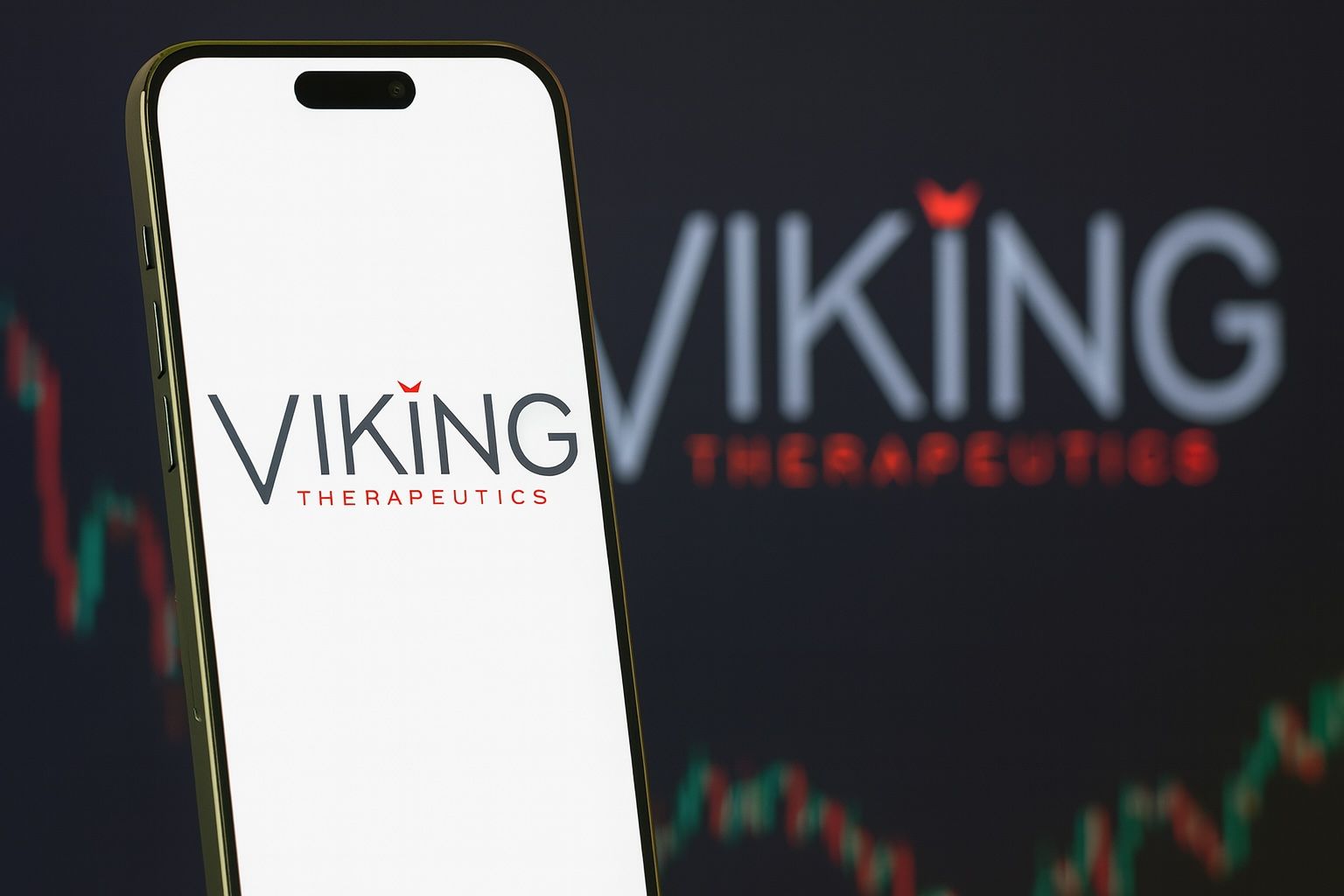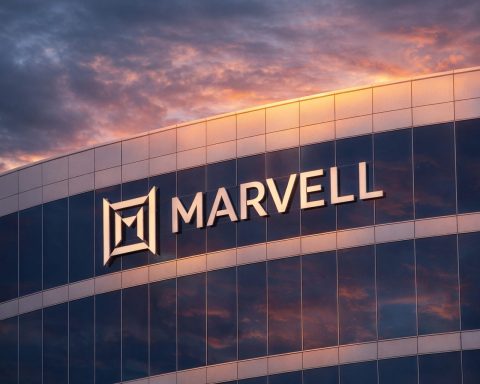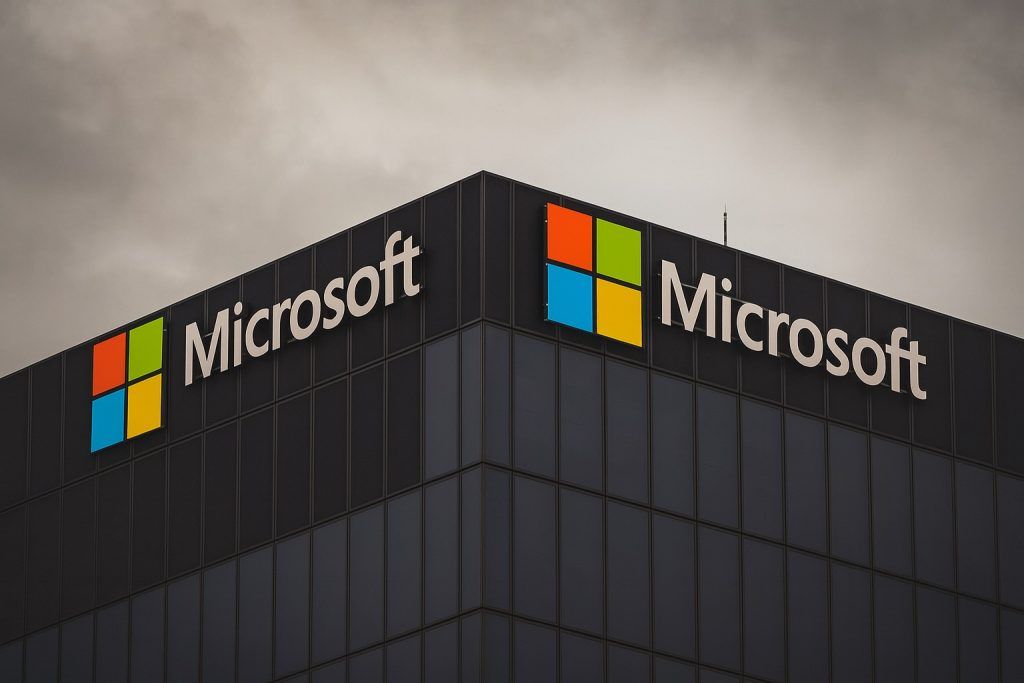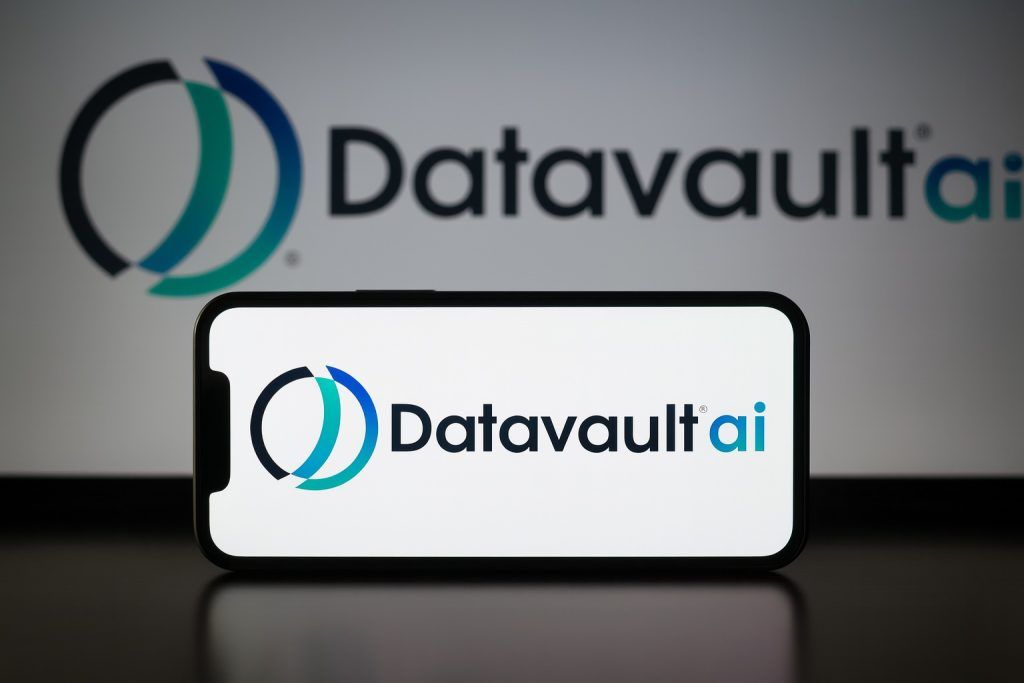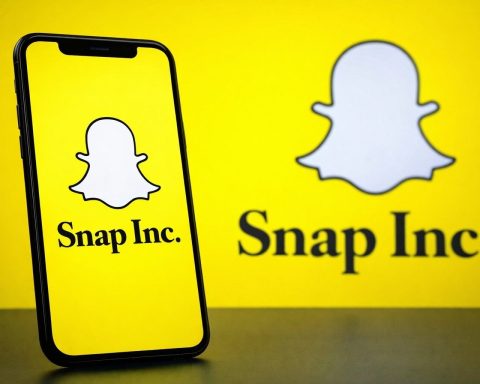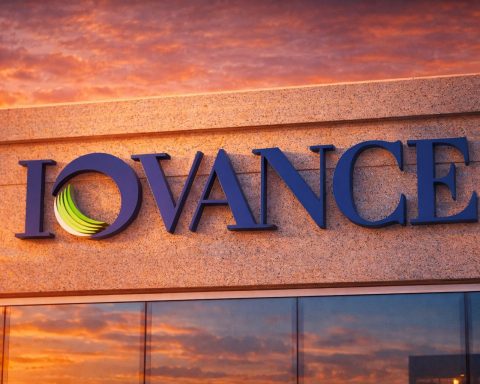What to Know Before Markets Open on October 20, 2025
- VKTX Stock Rebounds: Viking Therapeutics’ stock closed at $33.53 on Friday (Oct 17) [1], holding near recent highs after an early-October rally. Shares have bounced back sharply from a mid-August plunge, when disappointing trial data sent the stock down around 40% in a single day [2].
- Obesity Drug Milestone: Viking’s lead weight-loss candidate VK2735 (a dual GLP-1/GIP agonist) delivered ~12.2% body weight loss at the highest dose in a 13-week Phase 2 trial – a solid result but shy of Wall Street’s ~15% goal [3]. The oral pill’s 20% dropout rate due to GI side effects (nausea, vomiting) spooked investors [4]. Viking’s CEO plans slower dose titration to improve tolerability [5], and analysts note efficacy could improve with dosing tweaks [6]. Meanwhile, an injectable version of VK2735 showed ~14–15% weight loss with better tolerability in earlier trials [7] [8] and has already entered Phase 3 testing (the VANQUISH program).
- Big Pharma Buzz: The $150 billion obesity drug market has major players (Novo Nordisk, Eli Lilly) dominating, but Viking’s pipeline progress has put it “on the radar for partnership or acquisition” by larger pharma [9]. In fact, recent multibillion-dollar deals – Novo Nordisk’s $5.2B takeover of Akero Therapeutics and Pfizer’s $7.3B acquisition of obesity-drug maker Metsera – fueled speculation that Viking could be next [10]. Analysts and investors see a larger partner or buyer as a real possibility to help carry VK2735 through Phase 3 and commercialization [11] [12].
- NASH Drug Progress: Beyond obesity, Viking’s VK2809 for NASH (fatty liver disease) is another value driver. In a Phase 2b study, VK2809 met primary endpoints, achieving significant liver-fat reductions and disease resolution – 69% of treated patients saw NASH resolve (vs 29% on placebo) in 12 months [13]. The once-daily pill also led to 20%+ drops in “bad” LDL cholesterol [14]. With a similar mechanism to Madrigal’s recently approved NASH drug, VK2809 is viewed as relatively de-risked; analysts expect Viking to seek a partner to fund Phase 3 development and commercialization costs for this program [15].
- Financials & Outlook: Viking remains a pre-revenue biotech (net losses ~$60–65M per quarter) but is well-capitalized with over $800 million in cash on hand as of mid-2025 [16]. It even inked a $150M manufacturing deal with CordenPharma to secure production capacity for VK2735 – including up to 100 million doses annually of injectors and tablets – in anticipation of large demand [17]. Wall Street is bullish: 14 analysts collectively rate VKTX a “Buy/Moderate Buy” with an average 12-month price target around $86 (implying ~158% upside) [18]. Upcoming catalysts include Viking’s Q3 2025 earnings report on Oct 22 [19], where investors expect pipeline updates on the obesity trials and any partnership discussions, as well as initial plans for advancing VK2809.
VKTX Stock Steadies After Volatile Stretch
Viking’s stock has stabilized in recent sessions, trading in the mid-$30s after a roller-coaster few months. It ended Friday at $33.53 [20], roughly flat on the week and not far from its intraday high of ~$36.80 on Thursday [21]. This marks a dramatic recovery from mid-August, when VKTX plunged over 40% in one day following a crucial trial announcement [22]. Back then, Viking had unveiled results from a Phase 2 study of its oral obesity pill that missed investor expectations, triggering a sharp selloff. Since that rout, the stock has climbed back as optimism returns ahead of key catalysts. Heavy trading activity underscores the renewed interest – on Oct. 15, nearly 22,823 call options on VKTX traded (about 2.3 million underlying shares), including a burst of bullish bets at the $50 January strike [23]. This elevated options volume (over 40% of the stock’s typical monthly activity in a single day) suggests traders positioning for potential upside moves.
Notably, Viking’s resurgence has coincided with increased buzz around obesity drug makers and takeover speculation in the biotech arena. After sliding below $20 at the trough of August’s panic, VKTX has more than doubled off those lows – a volatile trajectory that reflects both the risks and the high hopes attached to Viking’s drug pipeline. Retail investors on social media have been actively debating Viking’s prospects (and even conducting informal price-target polls), illustrating how the stock has become a hotspot for biotech traders. In one Stocktwits poll over the summer, a sizable segment of retail respondents predicted VKTX could more than double by year-end – though others were far more skeptical, with opinions ranging from under $30 to above $80 [24]. Such wildly divergent expectations underscore that sentiment remains divided. Still, the overall tone has improved markedly since August, aided by supportive analyst commentary and sector-wide tailwinds. With shares now consolidating in the $30s, investors are looking ahead to upcoming data and corporate updates to determine if this rally has room to run.
Obesity Pill Shows Promise – and Challenges
The centerpiece of Viking’s investment story is VK2735, its experimental treatment for obesity. Uniquely, VK2735 is a dual agonist targeting both GLP-1 and GIP receptors – a cutting-edge approach aimed at amplifying weight loss effects. Viking is developing VK2735 in two forms: an injectable version (for weekly shots) and an oral pill. This summer’s drama centered on the oral formulation, which was tested in a 13-week Phase II VENTURE study. On the positive side, results showed substantial weight loss: patients on the highest dose (120 mg daily) lost 12.2% of their body weight on average, vs. minimal loss on placebo [25]. About 80% of treated patients shed at least 10% of their weight by week 13 [26] – an outcome that, on efficacy alone, “showed a clear dose response” and actually hit the upper range of analysts’ bull-case expectations [27]. For context, Eli Lilly’s oral GLP-1 pill orforglipron recently produced ~12.4% weight loss, but over a much longer 72-week trial [28]. By that measure, Viking’s 12% in just 3 months was encouraging progress for an oral agent.
However, these mid-stage results came with a big caveat: tolerability. The trial saw a 20% dropout rate among patients on VK2735 (versus ~13% for placebo), with gastrointestinal side effects – primarily nausea and vomiting – reported in over half of patients [29] [30]. According to BMO Capital Markets, investors had expected a “squeaky clean” safety profile to accompany the strong efficacy – “data demonstrated half of this,” the analysts noted bluntly [31] [32]. In other words, while VK2735 clearly works to cut weight, its side effects at higher doses were as severe as (or worse than) those seen with competing oral GLP-1 therapies, and a definite step down from injectable standards like Lilly’s Mounjaro (tirzepatide) [33]. This safety profile spooked the market. Viking’s stock nosedived ~41% when the data hit, reflecting fears that the pill might struggle to compete if patients can’t tolerate the regimen [34].
Viking’s management is tackling the issue head-on. CEO Brian Lian, Ph.D. indicated the company will implement a slower dose-escalation schedule in future studies to help patients better acclimate and mitigate GI side effects [35]. Essentially, by ramping up the dose more gradually, they hope to reduce nausea and dropout rates. Some analysts remain optimistic on this front: J.P. Morgan’s Hardik Parikh pointed out that VK2735’s side effects might be manageable with dosing tweaks, and that the drug’s efficacy “was good” despite the tolerability hit [36]. It’s worth noting that gastrointestinal discomfort is a known class effect of GLP-1 agonists – even Lilly’s oral candidate caused nausea in ~34% of patients (albeit with only ~10% dropout at the highest dose) [37]. So Viking is hardly alone in grappling with this challenge. The stakes are high, given that oral weight-loss drugs are seen as a potential “game-changer” in the massive obesity market if they can approach the potency of injectables [38] [39].
Crucially, Viking isn’t relying solely on the pill form. The subcutaneous (injectable) formulation of VK2735 has actually delivered even more impressive results with fewer side effects. In a Phase I and II program (VENTURE trial series) completed earlier, weekly injections of VK2735 achieved up to 14.7% mean weight reduction in just 13 weeks, with placebo-adjusted losses as high as 13.1% [40] – basically matching or exceeding the pill’s performance. Moreover, these studies reported an “encouraging safety and tolerability profile,” with mostly mild-to-moderate adverse events and treatment discontinuation rates comparable to placebo [41]. GI side effects did occur (as is typical for GLP-1 drugs), but 95% were mild/moderate, and they tended to appear mainly in the first week of dosing then decline over time [42]. In other words, the injection version of VK2735 looked much cleaner from a safety standpoint, while still causing significant weight loss even at moderate doses (e.g. a 15 mg weekly shot yielded ~15% weight reduction) [43]. These strong results paved the way for Viking to leap into Phase 3 with the injectable.
As of June, the company initiated Phase 3 “VANQUISH” trials for subcutaneous VK2735 [44]. This pivotal program is ambitious: it consists of two large studies – VANQUISH-1 in ~4,500 obese adults (BMI ≥30, or ≥27 with comorbidities) and VANQUISH-2 in ~1,100 obese/overweight adults with type 2 diabetes [45]. Participants will receive once-weekly VK2735 injections (at 7.5mg, 12.5mg, or 17.5mg doses) or placebo for 78 weeks – yes, a year and a half – reflecting the long-term nature of obesity management [46] [47]. The primary goal is the percent change in body weight at 78 weeks, with key secondary endpoints tracking the proportion of patients hitting ≥5%, ≥10%, ≥15%, and ≥20% weight loss [48]. These trials are massive and global in scale, underscoring Viking’s confidence in VK2735’s prospects. The company is even planning an additional study of a monthly-dosed regimen of VK2735, to test a more convenient maintenance dosing schedule later on [49].
If all goes well, Viking could be on track to file for approval of the injectable version in the next couple of years. The oral formulation, meanwhile, will likely undergo further refinement (possibly a longer Phase 2b trial with improved titration) before it proceeds to Phase 3. Viking’s dual strategy – developing both a weekly shot and a daily pill – could pay off handsomely if both are successful, offering patients and doctors flexibility. But in the near term, it appears the injectable VK2735 is Viking’s fastest path to market, given its head start in Phase 3 and the favorable data to date. Viking has openly stated that the oral data (which came in a bit under the high bar) “does not change” its strategic plans [50] – the company is still intent on pushing forward on all fronts, believing dosing optimizations can address the pill’s shortcomings. For investors, the key takeaway is that VK2735 remains a very viable contender in the anti-obesity race – albeit with some work to do on the oral side. The market’s initial overreaction in August now appears to be giving way to a more measured view as the focus shifts to execution in Phase 3.
Massive Market and Mounting Takeover Chatter
Viking’s story is unfolding against the backdrop of an explosive boom in obesity therapeutics, which has quickly become one of the hottest areas in all of pharma. Analysts peg the weight-loss drug market at $50 billion today and growing towards $100+ billion by 2030 [51] [52]. This surge is driven by the remarkable success of GLP-1 based medicines – injectable drugs like Novo Nordisk’s Wegovy/Ozempic (semaglutide) and Eli Lilly’s Mounjaro (tirzepatide) that have shown unprecedented efficacy in inducing weight loss, to the point of being dubbed “game changers” for obesity and related conditions. These products are already generating blockbuster revenues (Novo’s obesity care sales are soaring, and Lilly’s Mounjaro is expected to hit double-digit billions annually [53]), and demand still far outstrips supply. With obesity now recognized as a chronic metabolic disease – and even linked to improvements in NASH, cardiovascular health, and more – the potential indications (and sales) for these drugs keep expanding [54].
This gold rush has led Big Pharma to scramble for a piece of the pie, especially those who don’t already have a GLP-1 franchise. In recent weeks, that scramble has translated into major M&A moves – and put Viking firmly in the takeover spotlight. Earlier this month, Novo Nordisk agreed to buy Akero Therapeutics for up to $5.2 billion [55]. Akero is a developer of a NASH (liver disease) drug, not obesity per se, but Novo’s motivation was clear: combine Akero’s NASH therapy (an FGF21 analogue) with semaglutide to potentially enhance outcomes in fatty liver patients [56]. Hot on the heels of that deal, Pfizer made a play, announcing it will acquire a private obesity drug maker called Metsera in a transaction valued up to $7.3 billion [57]. Pfizer’s move is aimed at beefing up its weight-loss pipeline, which lagged rivals – Metsera reportedly has a next-gen GLP-1 candidate (originating from an Imperial College London program) that could be a once-monthly injectable [58] [59]. These back-to-back deals, both in the multi-billion dollar range, have “suggested that the fervor for M&A in the industry is heating up” [60]. As The Motley Fool observed, “the list of candidates gets smaller” with each acquisition [61] – meaning the remaining independent players like Viking look increasingly attractive by comparison.
Indeed, Viking Therapeutics keeps popping up as a prime M&A target in analysts’ discussions. Early this year, BioSpace reported that some analysts viewed Viking as “the most attractive M&A candidate in 2025”, citing its strong obesity candidate and “largely de-risked” NASH program [62] [63]. The rationale is straightforward: Viking offers a two-for-one shot at two huge markets (obesity and NASH), and both of its lead assets have compelling data so far. Terry Chrisomalis, a biotech analyst at Seeking Alpha, noted that VK2809’s mechanism is the same as Madrigal’s resmetirom (the first FDA-approved NASH pill), implying a lower risk profile for Viking’s NASH drug [64]. As for VK2735, he highlighted Viking’s “proven drug development model” and “solid obesity drug pipeline” as making it stand out among small-cap biotechs [65]. With Big Pharma hungry to fill pipeline gaps (many are staring down patent cliffs in the next few years), a company like Viking – if its Phase 3 obesity trials go well – could be a juicy target.
We’re already seeing hints of interest. In late June, Novartis’s CEO Vas Narasimhan remarked that Novartis is on the hunt for “next-generation obesity” candidates, sparking chatter that the pharma giant might look at companies like Viking. That week, Viking’s shares spiked on the mere mention of Novartis’s appetite, despite Novartis itself only being in early preclinical stages of obesity R&D [66]. And that was before the blockbuster Novo and Pfizer deals in this space became public. Now, with those precedents set, investors view Viking as in play – whether for a partnership or outright purchase – if it continues to execute. Simply Wall St analysts commented that the latest VK2735 results “increase the company’s visibility as a potential acquisition or partnership target for larger pharmaceutical firms” [67]. The Motley Fool likewise noted that “a larger pharma company may decide it’s worth taking Viking’s promising drug candidate through Phase 3” via partnership or buyout [68].
Of course, nothing is guaranteed – Viking could also choose to go it alone for longer, especially given its hefty cash reserves (and the fact that it has already lined up manufacturing capacity). But it’s telling that Viking’s name keeps surfacing whenever people talk about the next big obesity deal. The company itself seems cognizant of the trend: on its quarterly calls, management often emphasizes that they are open to strategic options that maximize shareholder value. For now, Viking is pressing ahead independently, but investors are clearly assigning a “takeover premium” to the stock in light of recent industry consolidation. Every new headline about an obesity drug acquisition sends a jolt through VKTX shares – as evidenced by the ~16% jump in Viking’s stock the week Novo’s Akero purchase was announced [69]. If nothing else, this speculation provides a tailwind for VKTX, even as the company’s fundamental progress will ultimately determine its fate.
Pipeline Beyond Weight Loss: NASH Candidate Shines
While obesity is the marquee opportunity, Viking’s pipeline extends into other metabolic disorders – notably NASH (non-alcoholic steatohepatitis), a severe fatty liver disease. Viking’s VK2809 is an orally administered thyroid hormone receptor beta (TRβ) agonist designed to target liver tissue and crank up metabolism of fats. In 2024, VK2809 delivered impressive Phase 2 results that have positioned it as one of the more promising NASH therapies in development. Viking ran a Phase 2b trial (VOYAGE study) in patients with biopsy-confirmed NASH (also referred to as MASH) and fibrosis. The drug met all primary and secondary endpoints, demonstrating statistically significant improvements on multiple fronts [70].
One key measure was reduction in liver fat content (assessed by MRI and biopsy). After 52 weeks on VK2809, patients saw mean liver fat decreases of 37% to 55% from baseline, and 64%–88% of treated patients achieved at least a 30% drop in fat – a commonly used threshold for meaningful response [71] [72]. By comparison, virtually all placebo patients failed to hit that mark. More importantly, actual liver health improved: Viking reported that 69% of VK2809-treated patients had their NASH resolve (per biopsy histology, meaning no fatty inflammation) with no worsening of fibrosis, versus only 29% of patients on placebo achieving resolution [73]. And 51% of treated patients showed an improvement in liver fibrosis with no worsening of NASH [74]. These are strong efficacy signals, comparable to – if not slightly better than – those seen with Madrigal’s resmetirom in its Phase 3 (the drug that led to FDA approval). Significantly, VK2809 also lowered LDL cholesterol by 20%+ on average [75], aligning with its mechanism (TRβ activation tends to improve lipid profiles). Safety-wise, VK2809 was generally well tolerated in trials, with side effect rates similar to placebo and some doses even showing significant drops in liver enzymes (a positive sign) [76].
Despite these achievements, Viking’s stock curiously fell on the VK2809 data release back in June 2024 [77]. Why? Likely because the company signaled an intention to prioritize obesity (a much larger and hotter market), and possibly to partner out the NASH program. With Madrigal’s resmetirom (brand name Resvety™, formerly known as resmetirom) now approved – the first-ever NASH drug in the U.S. as of early 2024 – some investors worried Viking might be a step behind or that competing against Madrigal would be tough. There’s also the reality that a Phase 3 NASH trial is a costly, multi-year endeavor (often thousands of patients over 12–18 months, with liver biopsies and hard outcomes). Viking, as a single-product biotech, may not have the resources or bandwidth to run a huge NASH Phase 3 and an obesity Phase 3 in parallel all by itself.
Analysts generally agree that finding a partner for VK2809 makes sense. Raymond James, for example, wrote that Viking would likely meet with the FDA to map out Phase 3 and “may seek a licensing partner to help pay for that trial along with potential regulatory submissions and commercialization” [78]. Management hasn’t announced any partnership yet, but they’ve indicated they’re exploring options. The advantage Viking holds is that VK2809 could be very appealing to a larger company: the drug’s mechanism is validated (Madrigal paved the regulatory path), and Viking’s data showed a “best-in-class” profile at a major liver conference [79], suggesting VK2809 might even have an edge in efficacy or safety. In short, VK2809 is an asset with real value – one that could either be spun out via a deal to bring in non-dilutive capital, or kept in-house if Viking sees a way to fund Phase 3 themselves (perhaps using their big cash reserve).
Beyond VK2735 and VK2809, Viking has a couple of earlier-stage programs worth a quick mention. One intriguing effort is a dual amylin and calcitonin receptor agonist (DACRA) program for metabolic diseases [80]. Amylin is a hormone that complements GLP-1 by promoting satiety; combining amylin analogs with GLP-1 has shown synergistic weight loss in studies (Novo Nordisk’s investigational Cagrilintide and Lilly’s retatrutide are examples). Viking’s DACRA compounds aim to harness that synergy. While details are scant, the fact that Viking is working on an amylin agonist suggests it’s planning for next-generation obesity therapies that could be used standalone or alongside VK2735. The company also has a rare disease program: VK0214 for X-linked adrenoleukodystrophy (X-ALD), a genetic disorder. VK0214 is another thyroid beta agonist, and in a Phase 1b trial in patients with the AMN form of X-ALD, it was safe and produced significant drops in very-long-chain fatty acids (the toxic molecules in that disease) [81]. While VK0214 and the DACRA program aren’t the main drivers of Viking’s stock today, they add breadth to the pipeline and could yield upside surprises down the road (or be partnering candidates themselves).
Financial Fortitude and Analyst Outlook
Developing cutting-edge drugs isn’t cheap, but Viking Therapeutics is financially fortified relative to many small biotechs. Thanks to a series of capital raises during periods of share-price strength, Viking entered the second half of 2025 with a war chest of about $808 million in cash and investments [82]. For context, the company raised a large amount in late 2023/early 2024 (capitalizing on investor enthusiasm for obesity plays) and ended 2024 with $903 million cash on hand [83]. This gives Viking a substantial runway to fund its trials without needing to dilute shareholders in the immediate future. Executives have stated that existing cash is sufficient to “achieve critical clinical milestones, including completing Phase 3 trials” for VK2735’s injectable form [84]. In the most recent quarter (Q2 2025), Viking’s net loss was around $65.6 million (–$0.58 per share) [85], reflecting heavy R&D spending on multiple programs. At that burn rate, the company has well over two years of cash (and likely more, as expenses will ramp gradually for the new Phase 3). In other words, Viking can afford to press forward aggressively, which is a competitive advantage in the biotech space.
Moreover, Viking has shown savvy in its preparations for potential success. In March 2025, it signed a strategic manufacturing partnership with CordenPharma to support VK2735’s late-stage development and eventual commercialization [86]. Under this $150 million multi-year deal, Viking has secured dedicated production capacity for both the injectable and oral forms of VK2735 – including an annual commitment for 100 million autoinjectors, vials, and syringes (for the weekly shot) as well as large-scale tablet manufacturing (for the pill) [87]. Essentially, CordenPharma will handle everything from peptide API synthesis to fill-finish of the drug product. Viking will make prepayments from 2025 to 2028 (credited against future orders) to lock in this supply [88]. This is a remarkable move for a company whose drug is only entering Phase 3 – it underscores Viking’s confidence in demand for VK2735 and ensures they won’t be bottlenecked by manufacturing if and when approval comes. CEO Brian Lian said the deal gives Viking “confidence [Corden] can deliver supply commensurate with what we anticipate will be significant commercial demand” [89]. Few small biotechs plan so far ahead; Viking’s proactive approach here has earned praise from analysts as smart de-risking of execution (and perhaps as a signal to potential pharma partners that Viking is ready to launch this product on its own if need be).
With its balance sheet robust and trials moving forward, how do the experts see Viking’s prospects? Analysts, on the whole, are bullish. According to MarketBeat, all 14 analysts covering VKTX have a consensus “Moderate Buy” rating, with 11 out of 14 recommending Buy and none outright bearish aside from a lone Sell rating [90] [91]. The average 12-month price target is $86.42 per share [92], which implies +158% upside from the current price – a reflection of the significant value analysts believe could be unlocked if Viking’s drugs succeed. Price targets range from a low of $30 (essentially where the stock was pre-October rally) to a high of $125 [93]. Notably, even the low-end $30 target roughly equals Viking’s August trough, suggesting the downside is seen as limited barring a major clinical failure. On the upside, some on Wall Street clearly envision a multi-bagger: Morgan Stanley, for instance, reiterated an Overweight rating and a $105 target after meeting with Viking’s management, citing confidence in the “multibillion-dollar opportunity” for VK2735 and progress toward securing commercial manufacturing [94]. As another vote of confidence, Oppenheimer and William Blair have also speculated that Viking’s long-term value may ultimately be realized via acquisition by a larger player, given the attractive risk/reward of its pipeline [95]. Those firms haven’t been shy about lofty scenarios – some have floated the idea that VKTX shares could trade in the triple digits if Phase 3 data are positive or if a bidding war emerges.
In the near term, investors are keenly awaiting October 22, when Viking will report its Q3 2025 financial results and hold a conference call [96]. While earnings for a clinical-stage biotech are not about revenue (there is none) or EPS (likely a loss of ~$0.70 per share is expected), the “corporate update” portion will be the real focus. Shareholders want to hear details on the Phase 3 VK2735 enrollment progress – is it on track, any tweaks to protocol, etc. – and on plans for the oral VK2735 program (will they extend that Phase 2 trial? add a new cohort with slower titration?). Any commentary around partnering discussions for VK2809 will also be scrutinized; a deal announcement there could instantly unlock value. Additionally, Viking might discuss new pipeline developments (for instance, progress in the amylin agonist program or the VK0214 rare disease trial).
Another catalyst on the horizon: the American Association for the Study of Liver Diseases (AASLD) “Liver Meeting” in mid-November, where detailed VK2809 results might be presented to the scientific community – potentially reinvigorating interest in the NASH program if the data shine. And looking further out, investors anticipate initial readouts from the Phase 3 obesity trials in perhaps late 2026 or 2027, though interim data could come sooner if there are planned analyses at certain milestones. It’s a long road, but the market tends to price in success (or failure) well in advance for biotech. That’s why Viking’s stock can swing wildly on early data or competitor news even years before any product hits shelves.
For now, Viking Therapeutics stands at a pivotal juncture. The company has a chance to prove that its promising mid-stage results can translate into real-world, late-stage success. If VK2735’s Phase 3 outcomes approach the efficacy seen so far – ideally with an improved side effect profile – Viking could emerge as a serious competitor in obesity care, a field currently ruled by pharma giants. Similarly, if VK2809 continues its strong trajectory, Viking has a shot at capturing part of the nascent NASH treatment market (either on its own or via a partner). There are undeniable risks: any hiccup in the trials, safety surprises, or an inability to hit the very high bar set by Novo and Lilly could derail momentum. Moreover, the biotech sector in general can be unforgiving; macro factors like rising interest rates or regulatory changes can impact valuations.
Yet the upside opportunity is equally undeniable. Viking is one of the few small-cap biotechs squarely in the conversation of two multi-billion-dollar therapy areas. It has cash in the bank, active Phase 3 trials, and the attention of both investors and industry leaders. As one analyst put it, for Viking’s shareholders “you need conviction in their clinical progress and potential to break into the vast ~$100B obesity market” [97] – but if that conviction holds true, the rewards could be substantial. With VKTX stock already rebounding on optimism, all eyes are on Viking’s upcoming updates to see if the company can keep executing. Informative, incremental wins – from trial updates to possible partnerships – could further validate Viking’s trajectory, while any stumble will be magnified given the high expectations. It’s a classic high-risk, high-reward biotech story, now playing out in real time on a grand stage. For a general investing audience, the takeaway is that Viking Therapeutics encapsulates the excitement and volatility of biotech’s new weight-loss frontier: a company with big science, big market potential, and – if things break right – possibly a big payoff in the years ahead.
Sources: Viking Therapeutics IR [98] [99]; TS² / Reuters [100] [101]; BioSpace [102] [103]; Simply Wall St [104] [105]; Motley Fool [106] [107]; MarketBeat [108]; AInvest/Yahoo Finance [109]; PharmExec [110]; BioPharma Dive [111] [112]; TS² Live Markets [113]; Stocktwits News [114] [115].
References
1. www.marketbeat.com, 2. ts2.tech, 3. ts2.tech, 4. ts2.tech, 5. ts2.tech, 6. ts2.tech, 7. ir.vikingtherapeutics.com, 8. ir.vikingtherapeutics.com, 9. simplywall.st, 10. www.nasdaq.com, 11. www.nasdaq.com, 12. stocktwits.com, 13. www.biopharmadive.com, 14. www.biopharmadive.com, 15. www.biopharmadive.com, 16. www.ainvest.com, 17. www.pharmexec.com, 18. www.marketbeat.com, 19. ir.vikingtherapeutics.com, 20. www.marketbeat.com, 21. ir.vikingtherapeutics.com, 22. ts2.tech, 23. ts2.tech, 24. stocktwits.com, 25. ts2.tech, 26. www.biospace.com, 27. www.biospace.com, 28. ts2.tech, 29. ts2.tech, 30. www.biospace.com, 31. www.biospace.com, 32. www.biospace.com, 33. www.biospace.com, 34. ts2.tech, 35. ts2.tech, 36. ts2.tech, 37. www.biospace.com, 38. ts2.tech, 39. ts2.tech, 40. ir.vikingtherapeutics.com, 41. ir.vikingtherapeutics.com, 42. ir.vikingtherapeutics.com, 43. ir.vikingtherapeutics.com, 44. ir.vikingtherapeutics.com, 45. ir.vikingtherapeutics.com, 46. ir.vikingtherapeutics.com, 47. ir.vikingtherapeutics.com, 48. ir.vikingtherapeutics.com, 49. ir.vikingtherapeutics.com, 50. simplywall.st, 51. simplywall.st, 52. www.ainvest.com, 53. ts2.tech, 54. ts2.tech, 55. www.nasdaq.com, 56. www.reuters.com, 57. www.nasdaq.com, 58. www.reuters.com, 59. www.fastcompany.com, 60. www.nasdaq.com, 61. www.nasdaq.com, 62. www.biospace.com, 63. www.biospace.com, 64. www.biospace.com, 65. www.biospace.com, 66. stocktwits.com, 67. simplywall.st, 68. www.nasdaq.com, 69. www.nasdaq.com, 70. ir.vikingtherapeutics.com, 71. www.biospace.com, 72. www.biospace.com, 73. www.biopharmadive.com, 74. www.biopharmadive.com, 75. www.biopharmadive.com, 76. www.biopharmadive.com, 77. www.biopharmadive.com, 78. www.biopharmadive.com, 79. www.biospace.com, 80. ir.vikingtherapeutics.com, 81. ir.vikingtherapeutics.com, 82. www.ainvest.com, 83. stocktwits.com, 84. stocktwits.com, 85. www.prnewswire.com, 86. www.pharmexec.com, 87. www.pharmexec.com, 88. www.pharmexec.com, 89. www.pharmexec.com, 90. www.marketbeat.com, 91. www.marketbeat.com, 92. www.marketbeat.com, 93. www.marketbeat.com, 94. stocktwits.com, 95. stocktwits.com, 96. ir.vikingtherapeutics.com, 97. simplywall.st, 98. ir.vikingtherapeutics.com, 99. ir.vikingtherapeutics.com, 100. ts2.tech, 101. ts2.tech, 102. www.biospace.com, 103. www.biospace.com, 104. simplywall.st, 105. simplywall.st, 106. www.nasdaq.com, 107. www.nasdaq.com, 108. www.marketbeat.com, 109. www.ainvest.com, 110. www.pharmexec.com, 111. www.biopharmadive.com, 112. www.biopharmadive.com, 113. ts2.tech, 114. stocktwits.com, 115. stocktwits.com
